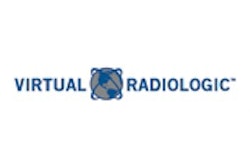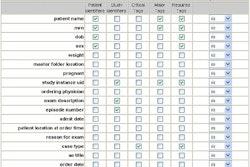International teleradiology is breaking new ground in a field where few hard-and-fast rules exist. Initially conceived as a convenience tool for radiologists on night call, teleradiology has become a means to extend the virtual workday at a time when imaging volume is rising at U.S. facilities. But the prospect of having images read by radiologists overseas has raised new questions about the legality and ethics of teleradiology.
State laws dealing with teleradiology focus on responsibility and accountability, with licensure and board certification viewed as the standards for competence. But such laws vary. Many states demand full licensure as a requirement for practicing teleradiology in the state; others require limited-practice certificates. In a handful of states, special licenses are not required if the physician is working in consultation with a locally licensed practitioner in the state.
To keep things simple -- and legal -- many groups providing teleradiology services obtain licensure in every state in which they plan to do business.
"No matter where you are, medicine is local -- it’s practiced where the patient is," said Jonathan Berger, vice president of Nighthawk Radiology Services, a company based in Coeur d'Alene, ID, that maintains a central reading facility in Australia. "The physician needs to be licensed in that state and credentialed at the hospital."
That opinion is borne out by the American College of Radiology’s teleradiology standard, which requires licensure at both the receiving and transmitting sites, and further that the radiologist be credentialed with appropriate privileges at the transmitting site.
The standard does not define specific qualifications to practice teleradiology beyond technical familiarity. It does require that radiologists performing teleradiology demonstrate "qualifications appropriate to the diagnostic modality being interpreted." For example, in the ACR standard governing MRI interpretation, the criteria states that radiologists be certified by the American Board of Radiology, or have completed an ACGME-approved radiology residency.
For example, in the ACR standard governing MRI interpretation, the criteria states that radiologists be certified by the American Board of Radiology.
Unlike licensure, board certification is a voluntary process. Yet hospitals, medical groups, and health plans have increasingly come to expect it. Not all practicing radiologists are board certified, however. Since its inception in 1934, the American Board of Radiology has issued a total of 42,000 certificates.
From a competitive perspective, board certification is mandatory for any company hoping to promote its teleradiology service, according to Berger. "It is the standard in the industry," he said.
Medicare issues
When it comes to payment for teleradiology, Medicare has long covered the professional component of the service as eligible for reimbursement. That’s not true of other telemedical applications, such as physician consulting, because those encounters require hands-on care, according to the agency.
But the Centers for Medicare and Medicaid Services (CMS) draws the line when it comes to providing services outside of the U.S., according Thomas Greeson, an attorney with law firm Reed & Smith in Falls Church, VA.
"Medicare prohibits payment for items and services furnished outside the country," Greeson said. "That’s not a problem for teleradiology services that only provide preliminary interpretation, because the local radiologist is the one writing the formal report. But the agency will not pay for formal interpretations rendered outside the country."
That’s a barrier for sites providing formal interpretations from overseas, but only to the extent that such providers must configure worklists to separate Medicare cases from non-Medicare cases prior to reading.
That’s what Dr. Sanjay Saini, director of CT at Massachusetts General Hospital in Boston, did during a test-drive of that hospital’s teleradiology link to Bangalore, India, in December.
"Since Medicare prevents billing of studies interpreted outside of the U.S., I first identified the insurer of the individual, so that Medicare studies would not be billed," he said. "It’s one of the more important issues from a regulatory perspective."
At Crozer-Keystone Health System in Philadelphia, three members of the U.S.-trained radiology team practice from Israel, providing preliminary reads for emergency CT scans performed on the night shift. Although the network’s PACS would support primary interpretation via teleradiology, the group decided not to risk the issue of "who is allowable, and who is not," according to Dr. John Bonavita, medical director of Media Medical Imaging at Crozer-Chester Medical Center.
"For the time being, our Israeli partners will give an initial read for studies performed during the night, and a second read for studies that have undergone a preliminary read in the evening," Bonavita wrote in an e-mail to AuntMinnie.com. "The other practices we cover are not interested in our providing primary reads. To date, our problem has been clearing our plates of p.m.-scheduled studies so that we can start with empty reading queues in the morning."
There is movement afoot to make primary interpretation outside the U.S. easier. Radiologists in Pennsylvania are working with Senator Rick Santorum (R-PA) on a bill that could change the wording of the Social Security Act that applies to payment for medical services provided outside national borders, Greeson said.
Malpractice coverage
Another tricky issue is malpractice coverage. According to the ACR standard, the interpreting radiologist must have liability coverage applicable to both the sending and interpreting locations. Obtaining adequate malpractice coverage is one of the biggest stumbling blocks for most would-be teleradiology services, Berger said.
"It’s difficult in today’s insurance market to have a teleradiology practice on any kind of scale and obtain malpractice insurance," he said. "And in order to get it, you have to maintain QA standards that meet or exceed the ACR teleradiology standard, as well as meet technology standards."
The site that is contracting for teleradiology services must also have appropriate liability insurance, noted attorney Greeson. Moreover, contracts between parties should clearly state liability and negligence.
"The nighthawk company needs to have coverage, but so does the radiology group that is using it," he said. "Both have to notify their carriers and make sure that the insurer includes those individuals (who are reading from overseas) as named insureds on their policy."
Conforming to the evolving guidelines of the Health Insurance Portability and Accountability Act (HIPAA) is another critical issue. Among its many requirements, providers must ensure that patient confidentiality and privacy are not compromised when information is transmitted electronically.
Ultimately, conforming with HIPAA could also mean informing patients that their medical data is being transmitted electronically to physicians in other parts of the world, noted Dr. Chip Truwit, chief of neuroradiology and chairman of Virtual Radiologic Consultants, a Minneapolis-based teleradiology firm with reading suites in Sydney.
"Every hospital is going to have to change its consent forms to include the statement that images or lab data or medical history may be shared across the telephone or Internet," he said. "It’s not just for teleradiology practices like us. There are no two ways around it."
At Crozer-Keystone Health System, ER patients are informed that a radiologist in Israel will be interpreting their images, Bonavita noted. The teleradiology practice has been welcomed by referring physicians -- who not only receive findings faster but also appreciate working with a wide-awake radiologist.
Such benefits are pertinent at a time when the Office of the Inspector General at the Department of Health and Human Services has targeted ER imaging for special study in its 2003 work plan, noted Greeson.
"The OIG is looking again at the timeliness of radiology studies performed for hospital ER patients, and whether those studies are interpreted contemporaneously with a patient’s treatment," he said. "Our practice is seeing a lot of interest, particularly by groups looking to teleradiology as a way to provide a faster response to ER needs."
Lingering issues tied to appropriateness of care and standards for disclosure in teleradiology may ultimately find their way to the courtroom, Greeson said.
Meanwhile, as long as imaging volume continues to grow while manpower decreases, the business of teleradiology at home and abroad will continue to expand.
"One of the biggest drivers in our business is the fact that few radiologists want to work nights," noted Berger of NRS. "Most residents looking for a job after training want groups with nighthawk coverage. It’s a very powerful recruiting tool for a group to offer a job with a good salary and no night call."
By Deborah R. DakinsAuntMinnie.com contributing writer
February 20, 2003
Related Reading
Imaging passage to India sparks outsourcing controversy, January 23, 2003
Radiologists find new recruiting incentives in tight employment market, December 12, 2002
NightHawk Radiology brings overreading from Down Under, March 21, 2002
Copyright © 2003 AuntMinnie.com



















